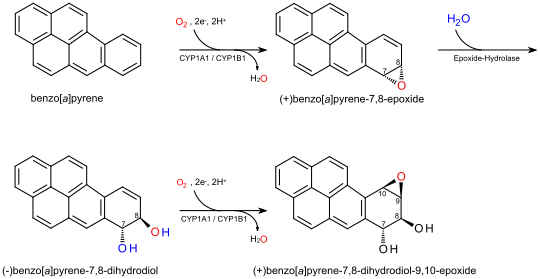Dihydromethysticin facts for kids
Quick facts for kids Dihydromethysticin |
|
|---|---|
 |
|
| IUPAC name | (2S)-2-[2-(1,3-benzodioxol-5-yl)ethyl]-4-methoxy-2,3-dihydropyran-6-one |
| Identifiers | |
| CAS number | |
| PubChem | |
| MeSH | |
| SMILES | COC1=CC(=O)OC(C1)CCC2=CC3=C(C=C2)OCO3 |
|
InChI
InChI=1S/C15H16O5/c1-17-12-7-11(20-15(16)8-12)4-2-10-3-5-13-14(6-10)19-9-18-13/h3,5-6,8,11H,2,4,7,9H2,1H3
|
|
| Properties | |
| Molecular formula | |
| Molar mass | 0 g mol-1 |
| Except where noted otherwise, data are given for materials in their standard state (at 25 °C, 100 kPa) | |
Dihydromethysticin is one of the six major kavalactones found in the kava plant.
Pharmacology
Dihydromethysticin has marked activity on the induction of CYP3A23, as does the related chemical desmethoxyyangonin.
Both dihydromethysticin and methysticin induce the hepatic enzyme CYP1A1, which increases the amount of the very highly carcinogenic benzo[a]pyrene-7,8-dihydrodiol-9,10-epoxide in the body (via the metabolism of benzo[a]pyrene) and may be responsible for some of the toxic effects associated with kava consumption.

Metabolism of benzo[a]pyrene yielding the carcinogenic benzo[a]pyren-7,8-dihydrodiol-9,10-epoxide.
In vitro, dihydromethysticin possesses analgesic, anticonvulsant, and anxiolytic effects. It has been found to act as a GABAA receptor positive allosteric modulator and as an reversible inhibitor of monoamine oxidase B.

All content from Kiddle encyclopedia articles (including the article images and facts) can be freely used under Attribution-ShareAlike license, unless stated otherwise. Cite this article:
Dihydromethysticin Facts for Kids. Kiddle Encyclopedia.
